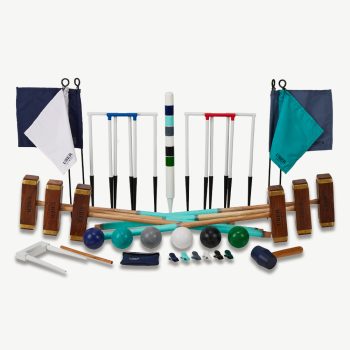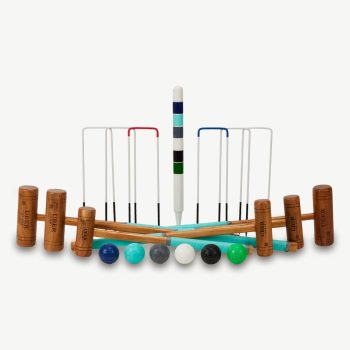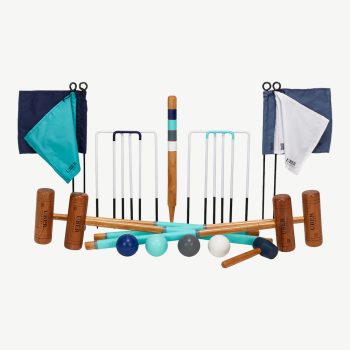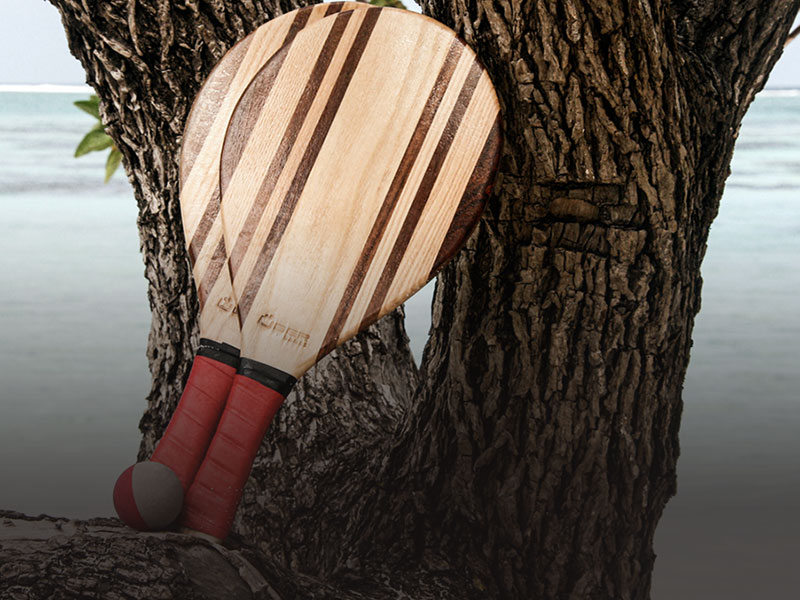How To Play Croquet – Rules & History
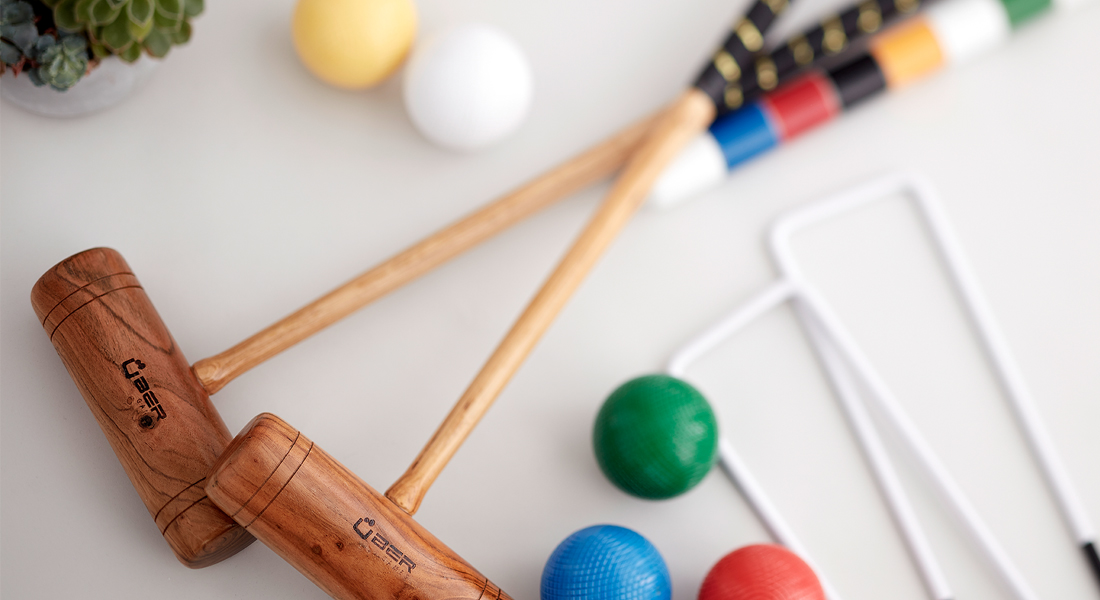
The Rules of Garden Croquet
The Object of the Game
Croquet is played by two sides. One side has the black and blue balls, and the other side has the red and yellow balls. The sides are either one player per side (singles) or two players per side (doubles). The rules are the same for singles and doubles. In the case of three players, one of the players plays both balls for their side.
The objective of Garden Croquet is to advance the balls around the lawn by hitting them with a mallet, through each hoop in the correct order and direction and finish by hitting the peg. A side wins by scoring the six hoops for both balls and the two peg points before the opposing side.
The six hoops and the winning peg are set out on the lawn as shown in the diagram below. If one of your hoops has a blue top then this should go in position 1 as the first hoop and the red topped hoop is the final one and goes in position 6. The order and direction of scoring the hoops is shown in the diagram. Each ball must score the six hoops in the right order as shown and then score the peg point.
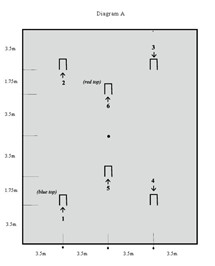
Turns and Extra Shots
The players take turns and only one plays at a time. At the beginning of a turn the player (called the “striker”) has one shot. After that shot the turn ends, unless extra shots are earned. The turn ends when the striker has no more extra shots to play. Then it is the opponents turn to play.
You can earn extra shots in two ways.
- By scoring the next hoop in order, earning one extra shot, or
- By striking your ball so that it hits one of the other three balls, earning two extra shots (see below).
Strategies
Various strategies are used to make hoops for your own balls and to make it difficult for the other side. The best strategy is usually to use the other balls (including the opponents) to obtain extra shots and score a number of hoops in one turn. This is called making a break.
How to Start the Game
The sides toss a coin to see who has the choice. The winner of the toss can choose whether to play first or second. The loser of the toss chooses which pair of balls to play (red/yellow or blue/black). There is no significant advantage in playing first or second.
Play starts from a point a metre in from the boundary in front of the first hoop. The first side hits either of their balls into the lawn. When the turn finishes the other side plays a ball from the starting point. You are allowed to gain extra shots (of either kind) immediately.
The First Four Turns
All four balls must be played into the game in the first four turns. For example if red plays first then the next turn is by black or blue. Lets say blue is chosen, then the third turn must be played with the yellow ball. The fourth turn of the game must be played with the black ball.
After the First Four Turns
When it is your side’s turn to play you first choose which ball to play. So if you are playing red and yellow, then at the beginning of each turn you choose whether to play red or yellow. The ball chosen is the only ball that can be hit with the mallet during that turn. A turn consists of a single shot unless you earn extra shots.
Earning Two Extra Shots
If you hit your ball so that it hits one of the other three balls you earn two extra shots.
The first of these extra shots (the croquet shot) must be taken in contact with the ball that has been hit. To do that you place your ball anywhere around the ball that has been hit. When you play the shot you strike only your ball but both balls can move. This shot enables you to position both balls depending on what type of shot you play. The second extra shot (the continuation shot) is then played from where your strikers ball lies.
After scoring a hoop you can earn extra shots again by hitting the any of the other three balls.
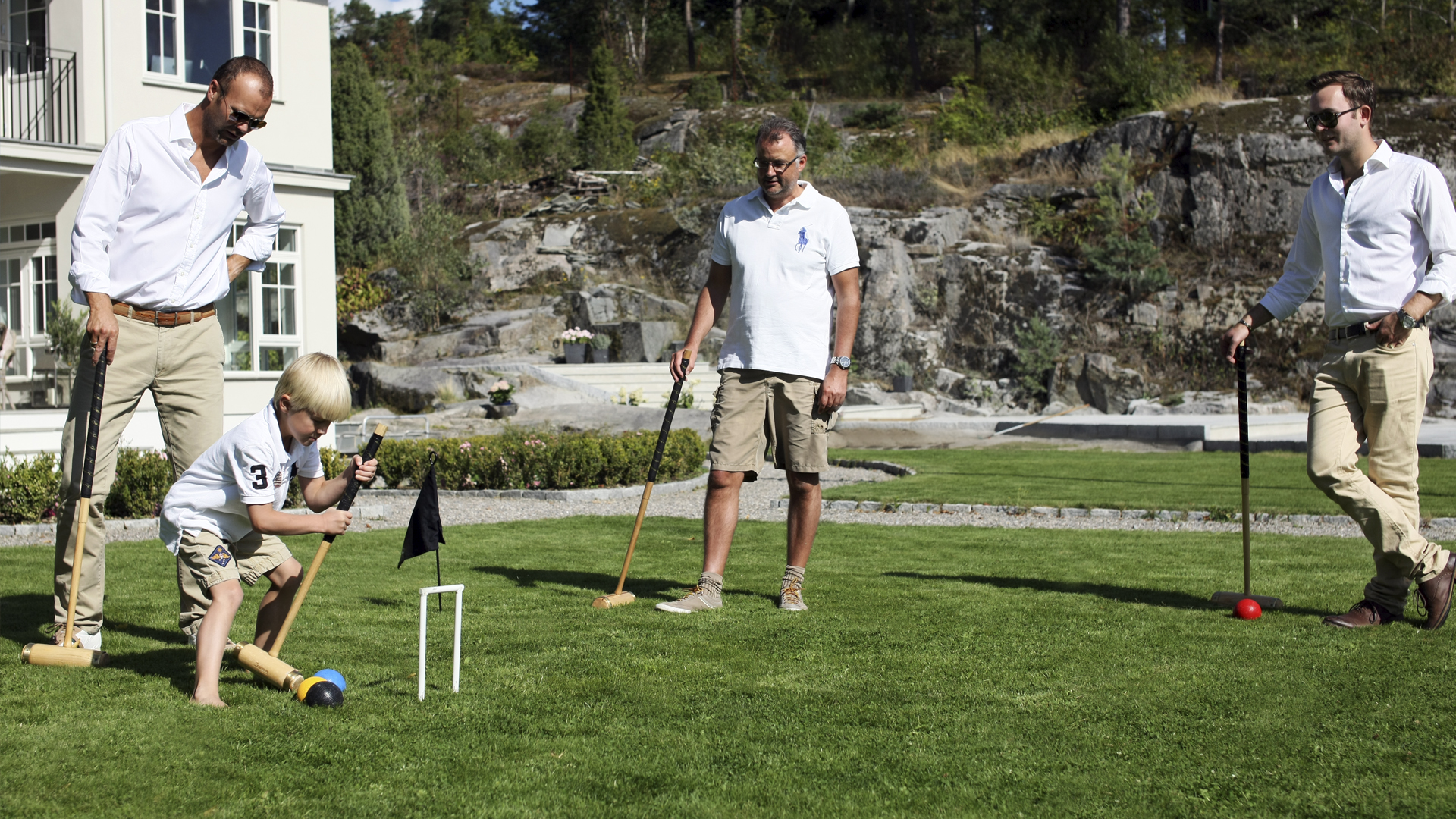
More About Extra Shots
At the beginning of each turn you are entitled to hit each of the other three balls once only in order to gain extra shots. However, if you score a hoop for your strikers ball you are again entitled to get extra shots from each of the other three balls.
Extra shots are never cumulative. So if for example you score a hoop and in the same shot hit another ball, you immediately play the croquet shot (the shot with the two balls in contact), and will have only one continuation shot. Similarly if when playing a croquet shot your ball hits one of the other balls it was still entitled to use, then you play the croquet shot immediately, and have only one continuation shot.
Ball Off the Lawn
If any ball goes off the lawn it is replaced a metre in from the edge where it went off the lawn and play continues without any penalty. If at the end of a turn, a ball lies within one metre of the boundary, it is moved into the lawn so that it is one metre from the boundary
Scoring a Hoop
The hoop is scored when your ball has passed sufficiently far through the hoop so that all of the ball has passed beyond the wire of the hoop on the side it has been played from.
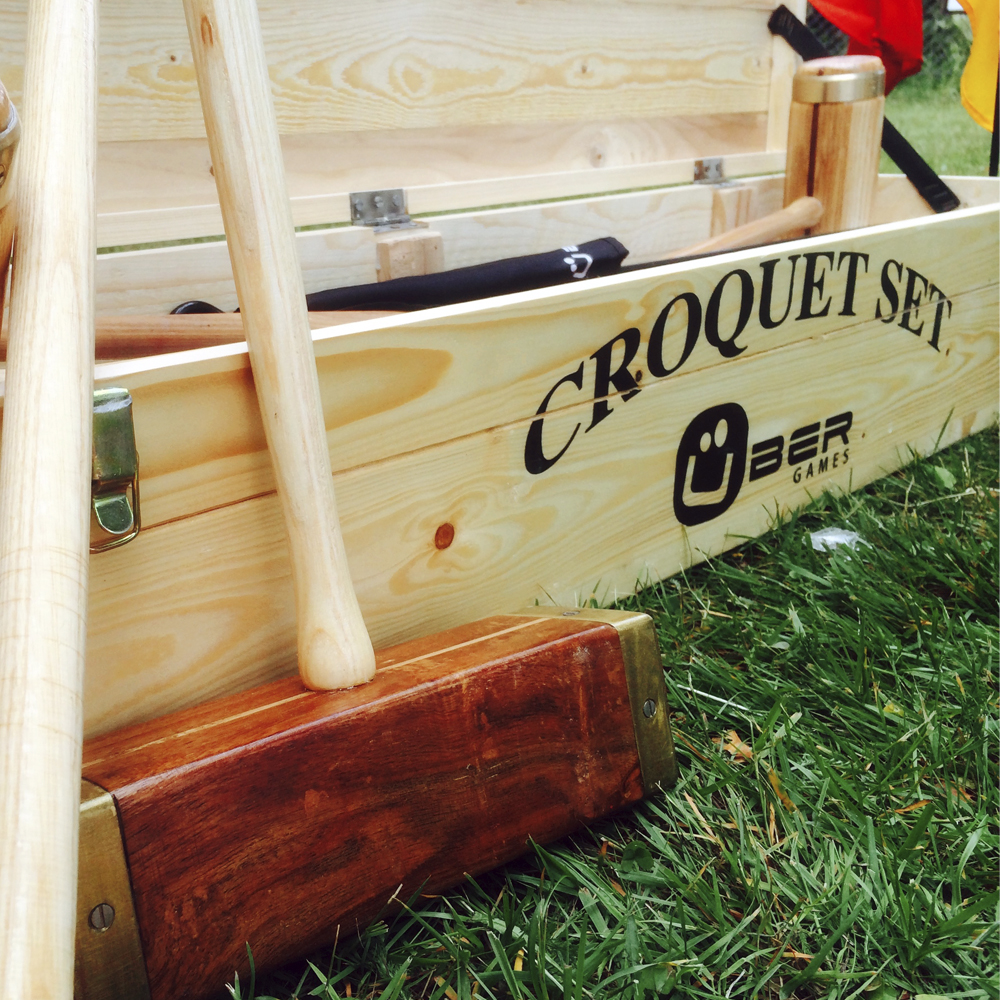
Striking the Ball with the Mallet
You must strike the ball with either end face of the mallet but with no other part. The ball must be struck cleanly. You cannot move hoops or the peg to enable a shot to be played.
Putting your foot on your ball (or indeed touching any ball with your foot) is not allowed.
Finishing and Winning the Game
A side wins the game by scoring six hoops for each ball and then hitting the peg with both balls. This is usually done in the same turn during a croquet stroke and the continuation stroke. Ideally you take croquet from your partner ball near the peg. Line the balls up so that in the croquet stroke the partner ball hits the peg, then in the continuation shot the strikers ball hits the peg.
However you can also win the game by hitting the peg with each ball in two separate turns. For example in one turn you strike red and it hits the peg. In a subsequent turn you strike yellow and that hits the peg. You win if you complete these shots before your opponent hits the peg with both of his balls.
A ball that hits the peg and has scored the six hoops in order and hit the peg is removed from the lawn immediately.
Doubles
There are two ways to organise doubles.
The first way is to play doubles with each partner ‘owning’ one of the balls of their side, so when the side opts which ball to play, they are also opting which partner will play. So for example one player will always play the red ball and his doubles partner will play always play the yellow. At the beginning of a turn the side can choose to play red or yellow. This determines which player plays that turn.
In the other form of doubles, partners play alternate strokes. This means that one player plays the first shot of the turn. If he earns extra turns then the next shot is played by the partner and subsequent shots alternate. In this version both partners stay more involved with each turn.


